The Hoi An Mid-Autumn Festival is a distinctive traditional celebration, held annually on the full moon of the eighth lunar month in Hoi An Ancient Town (Hoi An Ward, Da Nang City). It is also known as the Children’s Festival or the Reunion Festival—a time when families gather around the Mid-Autumn feast, admire the moon, enjoy tea and mooncakes, and share warm stories together.
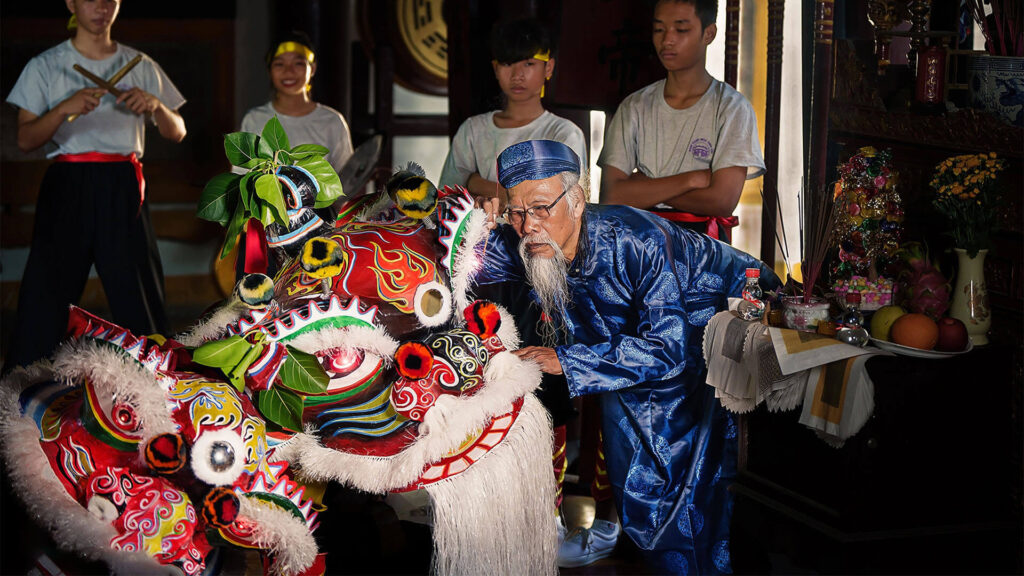
For the people of Hoi An, the Mid-Autumn Festival is not only a joyful occasion for children but also carries profound cultural and spiritual significance, reflecting the spirit of family reunion and gratitude to heaven and earth after the harvest season. With centuries of historical development, this festival has become an important aspect of community cultural life, attracting the enthusiastic participation of both local residents and visitors from near and far.
Origin, History, and Ritual Formation
The Mid-Autumn Festival has ancient origins in East Asian culture, celebrated as a mid-autumn occasion to pray for abundant harvests, family happiness, and national peace. In Vietnam, the festival has been observed for hundreds of years, blending indigenous beliefs with cultural influences from China. In Hoi An—once a bustling international trading port from the 16th to 18th centuries—the Mid-Autumn Festival gradually took shape and flourished, enriched by the convergence of diverse cultures, thereby creating unique characteristics distinctive to this land.
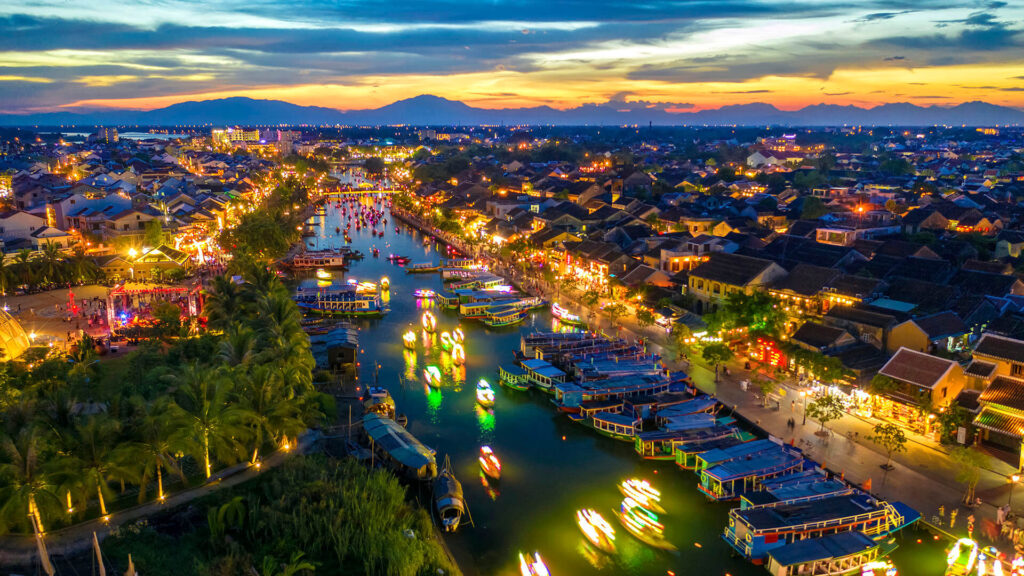
Since 1998, along with the preservation of the ancient town and the development of tourism, Hoi An has begun organizing the “Ancient Town Full-Moon Night” on every full-moon occasion, recreating a traditional setting without electric lights, illuminated only by the shimmering glow of lanterns. In particular, the Hoi An Mid-Autumn Festival in recent years has been closely associated with this event, becoming a unique autumn festival, radiant and enchanting, that attracts a large number of visitors.
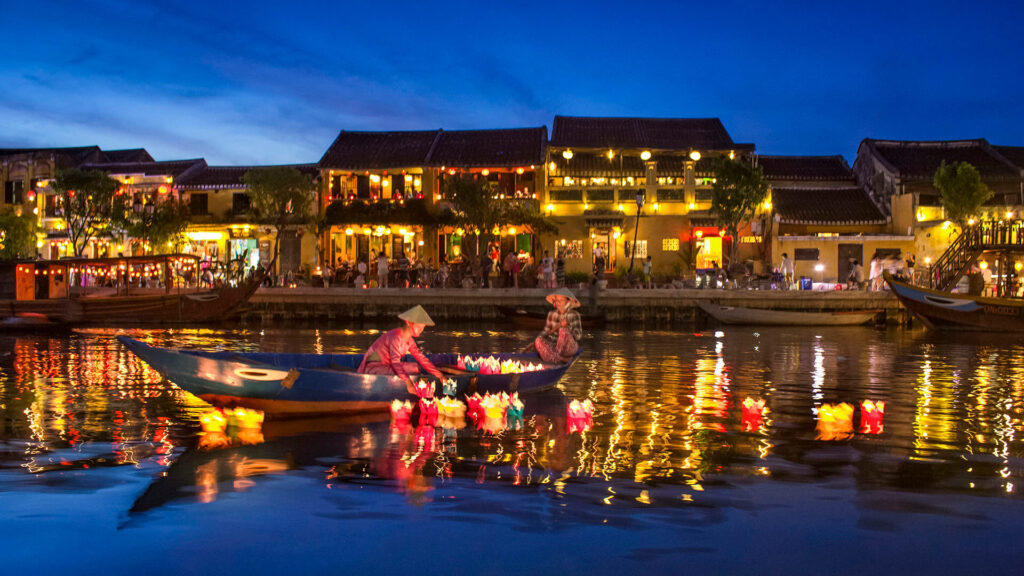
Although the Mid-Autumn Festival is largely associated with joy and merriment, Hoi An still preserves traditional ceremonial rites on the night of the full moon in the eighth lunar month. Within each family, almost every household prepares an offering tray to honor the moon on Mid-Autumn night. On the ancestral altar and in front of the house, people arrange fruits, mooncakes, tea, and typical offerings (such as pomelo, persimmon, custard apple, and more) to present to the deities, ancestors, and wandering souls. This ritual expresses gratitude to Heaven, Buddha, and forebears, while praying for family peace, abundant harvests, and prosperous trade. When the moon reaches its zenith, families conduct their prayers; children respectfully join their hands before the offering tray and then joyfully gather to “phá cỗ”—sharing the festive delicacies amid cheerful laughter.
The Cultural and Touristic Roles and Values of the Festival
For the community of Hoi An, the Mid-Autumn Festival has long surpassed the meaning of an ordinary children’s celebration to become a treasured intangible cultural heritage of the locality. The festival embodies a wealth of unique traditional values—from the art of lantern-making and mooncake crafting to lion and Thiên Cẩu dances, folk songs, and traditional games. Through this festival, beautiful customs such as offering worship to the full moon, giving gifts and cakes to children, and family reunions are preserved and passed down through generations.
The spirit of community solidarity is also strongly expressed: the entire town joins hands in preparing for the festival, while elder artisans wholeheartedly teach the younger generation how to make lion heads, lanterns, and perform the Thiên Cẩu dance. Thus, the Hoi An Mid-Autumn Festival not only preserves the essence of traditional culture but also breathes new vitality into the spiritual life of the people amidst the rhythm of modern life.
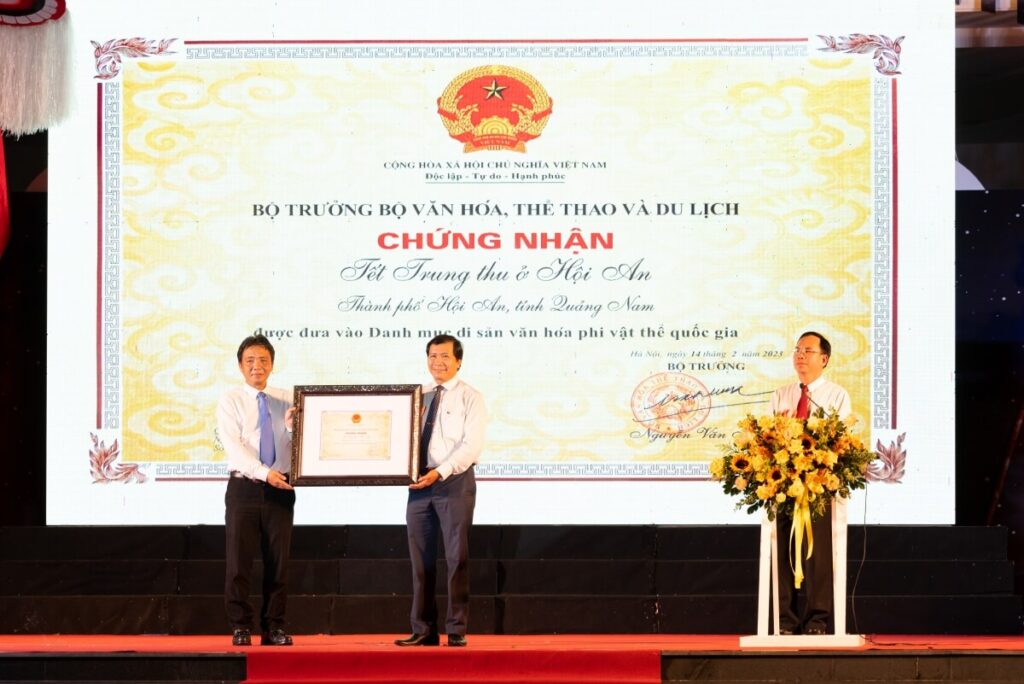
In terms of heritage recognition, the Hoi An Mid-Autumn Festival was officially inscribed as a National Intangible Cultural Heritage by the Ministry of Culture, Sports and Tourism in early 2023. This recognition affirms the festival’s significance within the treasure of the nation’s intangible heritage, while also creating opportunities to widely promote the cultural image of Hoi An.
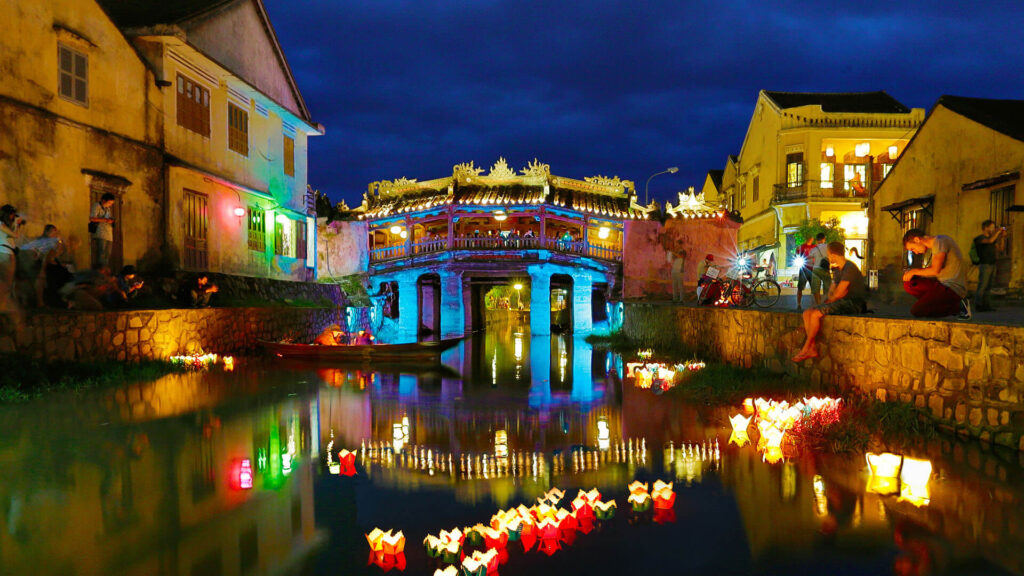
Today, the Mid-Autumn Festival has become an attractive cultural and festive tourism product, contributing to drawing a large number of visitors to the ancient town on the full moon of the eighth lunar month. Tourists not only immerse themselves in the fairy-tale space of lanterns and take part in vibrant festive activities, but also gain deeper insight into the distinctive spiritual and religious values of the local community.
At present, both the authorities and the people of Hoi An place great emphasis on preserving and promoting this traditional festival, regarding it as both a source of pride and a shared responsibility in safeguarding the nation’s cultural identity. The Hoi An Mid-Autumn Festival is thus both an invaluable spiritual treasure for the people of Hoi An and a unique tourism highlight, leaving lasting impressions on domestic and international visitors about an ancient town steeped in cultural identity.
DANANG CENTER FOR TOURISM PROMOTION